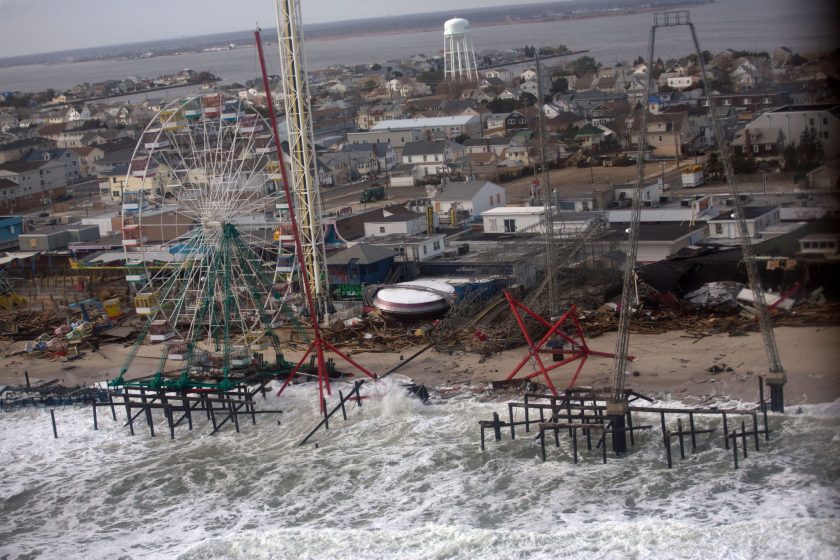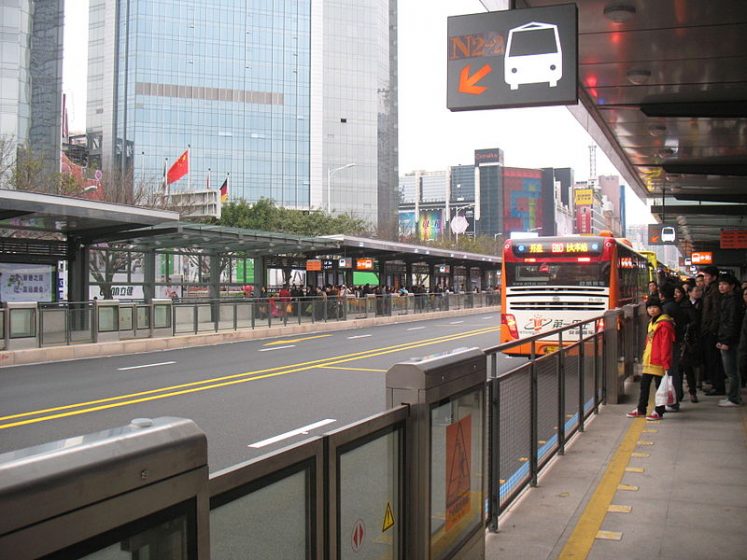Cities are helping lead the global effort
Cities are the new face of climate change. Where I live in New Haven, Connecticut (USA), we are witnessing its impacts—warmer winters, sea level rise, and inland and coastal flooding. The city is taking steps to address climate change, including adding bike lanes and adapting to future vulnerabilities. These measures to create climate solutions are not unique—hundreds of cities across the planet are assessing their own vulnerabilities to climate impacts and designing solutions that reflect and respond to local conditions. Climate change has emerged as a local issue that requires local solutions.
Cities have emerged as key partners in the fight against climate change, but their impact goes beyond the numbers.
In the U.S., the first few months of Trump’s presidency have been characterized by reversing or abandoning federal climate policies altogether. Measures to reduce fugitive methane emissions, standards to improve fuel economy of cars and trucks, and the Clean Power Plan all headed for the chopping block. The Keystone XL pipeline was approved and federal lands and waters were opened to new oil and gas drilling. But the importance of cities reached a tipping point in late May when Trump announced that the U.S. would pull out of the Paris Agreement. This announcement was met with strong and swift repudiation of the President’s actions – cities responded with new municipal climate commitments and mayors denounced the withdrawal from the international climate agreement. Cities like Pittsburgh have committed to 100% renewable energy, and more than 230 cities recently pledged to support the Paris climate targets.
Cities have emerged as key actors in the fight against climate change, but it is worth an investigation to understand the extent to which cities are helping meet international emissions targets. Does city climate action lead to substantial emissions reductions, and if not, why? What is the real importance that cities have in meeting global emissions reductions targets?


Progress at the city level
Cities are helping make progress to meet international targets. Cities are measuring their emissions, setting targets, implementing measures to reduce emissions, and joining pledges and pacts (such as the Compact of Mayors). Many cities are setting goals for 2050 and beyond, signaling a commitment to long-term investments in infrastructure and technology that can shape low-carbon development. Many of these targets are in line with international climate mitigation and adaptation commitments. Cities are installing solar panels, building bike lanes, expanding energy efficiency programs, incentivizing public transit, and supporting electric vehicles. These measures have real impacts on reducing a city’s emissions, as well as reducing global climate emissions. Local policies have an impact on the global level.
Although estimates vary based on today’s pledges, it is expected that urban climate policies will avoid between one and three gigatons (Gt) of carbon dioxide (CO2) emissions by 2020. These avoided emissions are the equivalent of shutting down between 300 and 900 coal-fired power plants for one year.
Challenges for city action to deliver international targets
Even with the heightened focus on municipal-level climate action we are still a long way from meeting global emissions reductions targets. Annual carbon emissions were around 49 GtCO2 in 2010, and there is a large gap between what cities can directly reduce and what is needed to meet Paris climate targets. Not all of these emissions contribute to global warming as some is absorbed in carbon sinks (e.g., oceans, forests), but the municipal emissions avoided are too small —federal action will still be needed to meet global emissions reductions targets. Cities alone are not the silver bullet to keep climate change in check.
Some of this discrepancy between a city’s apparent best effort to reduce emissions and the actual policy results are inherent limitations in what cities can achieve. Despite cities’ attempts to address climate change—be it adaptation or mitigation—they are bounded in their abilities to implement climate policies by existing legal constraints, a city’s development trajectory, and available resources or capacity. The legal constraints of the policies available to cities can restrict the policy levers available for local governments. The existing infrastructure and urban development trajectory determine the opportunities for implementation of low-carbon strategies. The existing resources available to a municipal government—from financial to technical expertise—determines the extent to which urban areas are able to implement climate policy.
Existing local government law is the overarching political lens through which we can understand municipal climate policies. Cities do not have a free license to drive policy innovation and adoption. There are constraints on what a city can accomplish or implement based on the constitutional authority or policymaking power afforded by a state. Local government law is created by national governments (such as in the UK or South Africa) or by subnational governments (e.g., the states in the United States). The legal mechanisms established by national or subnational governments determine the legal aspects of how a city operates, including city governance structures, fiscal authority, land use regulatory structures, and city boundaries. As a result, the extent to which self-determination can occur at the city level is constrained in large part by the capacities and requirements set by the federal or subnational governments. For example, even though a city may wish to install a bus rapid transit system, it may not have the regulatory authority to do so—that authority may lie with a different government entity such as a regional transportation agency.
The second limitation is the existing built environment and development patterns, which set in motion the opportunities and challenges that a city may face as climate policy is developed. Cities have very different emissions trajectories shaped by a range of factors, including heating degree days, economic activity, population density, power generation, technology, transport energy consumption, and urban form. In cities, energy use (and therefore emissions) generally increases with increasing economic activity for cities with less than $10,000 gross domestic product (GDP) per capita. Energy use increases more slowly for cities with GDP per capita above $30,000 USD—many of which are countries belonging to the Organisation for Economic Co-operation and Development. If a city is developing with relatively little infrastructure lock-in, rapid development presents more opportunities to encourage a low-carbon development pathway – construction of compact mixed use housing, connectivity through multimodal transportation options, and low-carbon building materials (such as timber-frame high rises). For mature cities, low-carbon policy options may be blocked by inertia of the existing infrastructure. Generally, cities in more developed countries are further along this urban emissions pathway.
The last constraint is the available resources—from financial resources to technical expertise. Cities are faced with many competing priorities, and climate change does not often register as a key priority. Although this is changing, there are many reasons for this—climate change is characterized by delayed effects, dispersed impacts and weak governance resulting in policies that “discount the future irrationally.” Even cities in California—a relatively financially stable state with a progressive climate agenda—may not meet some of their climate goals because of a lack of adequate resource capacity.
City action is Important for climate change
Even though there are many challenges at the city level, more and more cities are stepping up to the plate to reduce emissions. Cities that have already begun are forging ahead with measures to reduce emissions.
Cities are truly labs of experimentation; they are sources of innovation and inspiration for policy development that is not politically feasible at other levels of government. Cities can demonstrate that a given climate policy is successful, and can encourage implementation in other cities or the scaling up of that policy at other levels of government. The flexibility and nimbleness, often because there is less bureaucracy at the city level, represents an important component to scale up successes to the subnational, national, and international scales.
Another key part of climate policy is that they can create a multitude of co-benefits. Co-benefits are additional benefits that are realized through a given climate policy, that are above and beyond the direct benefits of emissions reductions. These co-benefits can be particularly important selling points in messaging a given policy, allowing the climate mitigation to be communicated as an associated or additional benefit. Local governments respond heavily to these demand-side factors. Co-benefits can include green jobs, improved air quality, reduced traffic congestion, and economic development. Green jobs, such as in solar and wind, represent important employment opportunities. Improved air quality or alleviation of congestion result from policy co-benefits associated with transportation emissions. For example, bus rapid transit can provide reductions in emissions as well as alleviate poor traffic conditions and improve local air quality. The financial co-benefits associated with climate action can also be seen as part of a strategy to develop a competitive advantage over other neighboring cities. Policies in a municipality to support renewable energy may lead to the relocation or expansion of renewable energy companies. This helps create a competitive advantage, and accelerates and diversifies the city’s economic development.
Cities move us forward
Cities represent a huge opportunity to mitigate climate change, and there are many openings to use the policies implemented at a local scale to contribute to national or international progress on this wicked problem. Furthermore, cities also represent a groundswell of action that has driven support for international engagement, including the Paris Agreement. The opportunities presented by climate policies in New Haven are many—the city is creating a better quality of life by encouraging biking and walking options, helping residents save money on heating bills by supporting building retrofits, and protecting residents from the financial impacts of flooding and sea level rise. The city’s leadership on climate change can help drive more aggressive action at the state level, creating a positive feedback loop and momentum to support climate policies in other Connecticut cities. Even though New Haven’s climate policies may not make the difference in limiting warming to 1.5oC, the city’s support brings home the concept that climate change is a local issue with local solutions.
The key challenge is that there is only so much that cities can do without top-down action. Cities still need the support from states and national governments to achieve the emissions reductions in line with the Paris climate targets. Because of the nature of local government law, there are limitations on what a city can implement without regulatory approval from a state or national government. Ambitions are unfortunately tempered by legal and regulatory structures. The existing infrastructure and emissions trajectory in a city delineates the extent of policy options are available. And, a city may not have the resources available to implement a desired climate policy. While cities are important to reducing emissions, they are not able to do it alone.
Within the U.S., some of the greatest opportunities to reduce emissions are not at the city scale. Retiring coal fired power plants and strengthening vehicle emission standards are two policies that have the greatest potential to drastically reduce emissions. And, there is not much that cities can do to make sure that those policies are in place. However, in aggregate, city reduction strategies do represent a significant opportunity to stay on track to meet our climate targets and limit the impact of Trump’s withdrawal from Paris.
In today’s landscape, we are looking to cities to scale and amplify the momentum that has already been exhibited thus far. Signing a pledge is an important first step—but it is just the beginning. Current municipal initiatives are not enough to meet international targets. But leveraging available resources, inspiring creativity, and bringing citizens together can hopefully foster the ambition needed. It also may require acknowledgement that although cities are important for many reasons—a key contribution to meeting the climate challenge may not be through emissions reductions, but rather driving the international agenda and setting in motion the measures to reduce emissions, such that when state or national action comes along, it is that much easier to do.
Emily Wier
New Haven







Leave a Reply